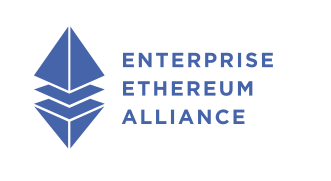Earlier this 12 months, we celebrated Ethereum’s seventh anniversary. It was a possibility to look again at a few of the platform’s large milestones and the important thing gamers who’ve helped drive its development. And what a great distance we’ve come! Since its launch in 2015, Ethereum has matured considerably, loved substantial person progress and is properly on its solution to turning into a extra mainstream enterprise software. Nevertheless, regardless of the myriad advantages it presents, the platform has additionally lengthy endured important criticism associated to its environmental footprint. And, this critique has been legitimate…till now. On Sept 15, a major and extremely anticipated Ethereum replace, often known as The Merge, revolutionized a few of the basic traits of the platform, altering the way in which through which the blockchain grows and making its historic environmental challenges simply that: historical past. To higher perceive the platform’s earlier sustainability points, and this essential answer, let’s rewind to Ethereum’s beginnings.
In 2015, Ethereum was launched as a Proof of Work (PoW) platform. With PoW, Ethereum node operators, often known as “miners,” compete to suggest new blocks within the chain. This competitors calls for important computational work and requires massive quantities of power to execute. It’s essential to notice that Ethereum’s founders developed the platform this fashion deliberately. The PoW format, pioneered by Bitcoin, was efficient at preserving the system safe – since mining new blocks requires important computational work, and miners should pay for the power (and purchase numerous {hardware}), no single miner can dominate the community. This strategy helps maintain block manufacturing decentralized, which ensures the safety of the community and prevents malicious actions – all essential and optimistic options of the Ethereum blockchain.
The draw back, in fact, is that the power exerted so as to add to the blockchain in a PoW system creates a major carbon footprint. This problem didn’t come as a shock. Ethereum’s founders knew that PoW would finally change into unsustainable, and switching to a Proof of Stake (PoS) system was at all times a deliberate step on the Ethereum roadmap. With PoS, contributors, often known as “validators,” make new block proposals by locking up 32 ETH of their very own cash, as an alternative of competing. Earlier than a block is added to the chain it have to be accepted by two-thirds of validators, and if it’s rejected a portion of the validator’s 32 ETH funding is misplaced. This pricey punishment helps forestall malicious actions and make sure the general safety of the ecosystem.
The transfer to PoS is what has been dubbed The Merge. It’s been talked about for a while now and is predicted to drastically slash the platform’s power consumption and considerably scale back its carbon footprint. The Ethereum Basis suggests The Merge will reduce Ethereum’s power use by an unbelievable 99.95%, permitting it to utterly shed the environmental stigma it has lengthy carried and positioning it to be an much more engaging and viable enterprise software.
Maybe you’re questioning, why has it taken so lengthy to get so far? The easy reply is, it’s sophisticated. Constructing a scalable and decentralized PoS system required intensive analysis and important improvements in cryptography. The PoS expertise accessible on the time of Ethereum’s launch in 2015 didn’t meet the group’s requirements for decentralization and safety, and whereas different tasks opted to maneuver to PoS earlier and make compromises in these areas, Ethereum refused to make these sacrifices. As an alternative, builders took the time wanted to make sure the long-term well being, performance and progress of the platform, all crucial elements for enterprise customers.
The enterprise advantages of the transfer to PoS are clear: a extra sustainable platform makes for a extra engaging enterprise software and mitigates the danger of incurring environmental disgrace for constructing on a PoW blockchain. In truth, the transfer to a extra sustainable mannequin is more likely to increase Ethereum’s enchantment throughout a broad viewers, attracting extra customers and finally serving to to construct a stronger, safer ecosystem.
Whereas The Merge shouldn’t be considered as Ethereum’s “last vacation spot,” it’s a important step on the platform’s roadmap that can alleviate the environmental criticism it has lengthy endured and vastly scale back its carbon footprint. Having just lately regarded again on the progress of the primary seven years of Ethereum, it’s thrilling to look ahead to what the following seven years might deliver. We are actually residing in a post-Merge world, and Ethereum is an excellent stronger, extra sustainable platform that may higher assist companies throughout industries drive efficiencies, reduce prices and obtain their targets. Right here on the EEA, we will’t wait to assist extra corporations make the most of this beneficial software to drive their operations ahead.
Wish to study extra concerning the EEA and the various advantages of membership? Attain out to group member James Harsh at [email protected] or go to https://entethalliance.org/become-a-member/.
Comply with us on Twitter, LinkedIn and Fb to remain updated on all issues EEA.

